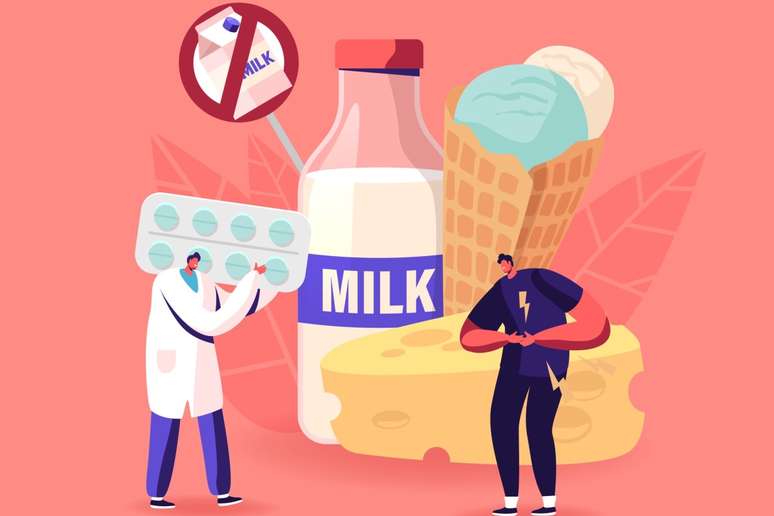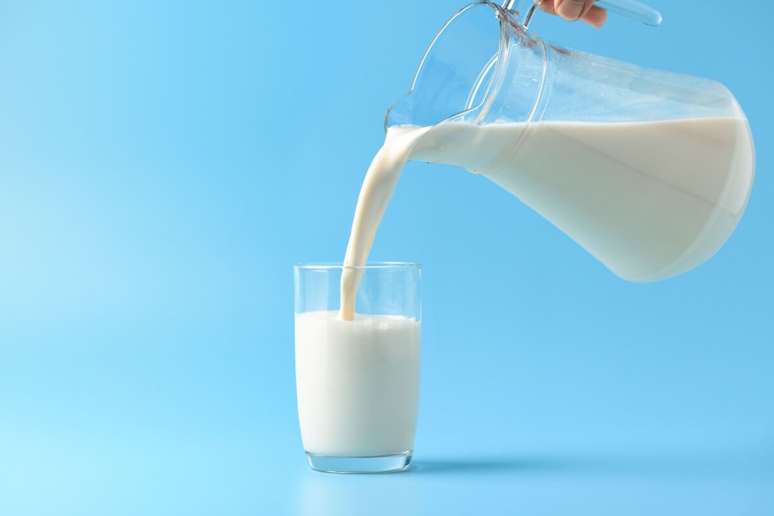Discover the importance of this food for health and its benefits
When it comes to food, it is common for some products to be the subject of controversies that divide opinions and create confusion among consumers. Many of them, despite being indispensable for a large part of the population, end up being surrounded by unfounded ideas or myths perpetuated over the years. Milk, for example, is a food that has been the subject of misinformation on social media.
According to data from the Brazilian Agricultural Research Corporation (Embrapa), until 2023, the consumption of milk and its derivatives in Brazil was 183 liters/inhabitant per year, higher than the world average of 116 liters per capita/inhabitant per year. ‘year.
The data demonstrates the enormous relevance of milk as a major source of protein of the Brazilian and that, therefore, misinformation about the product can, in fact, have a negative impact on thousands of people.
Based on the information provided by one of the most traditional brands of milk and dairy products in Brazil, Marajoara, whose factory is located in Hidrolândia (GO), we clarify 6 myths and truths about this drink. Check!
1. Milk in cartons contains carcinogens
Myth. The process of packaging long-life milk, “carton milk”, is known as UHT, an abbreviation of the English term ultrahigh temperaturethat is: treating milk at high temperatures. This procedure is carried out in the following way: fresh milk is collected from rural producers and stored in thermally insulated tanks, covered with aluminum foil which maintains the temperature of the food.
Immediately upon arrival in the industry, a sample of each truck undergoes quality testing. At the Marajoara plant, for example, 17 measurements are carried out in a two-hour period. “The product, falling within the regulations, is discharged into a physical cooling tank and then sent to the pasteurization room. This first process already eliminates 85% of the bacteria present in the milk, at least the harmful ones, as it is worth remembering that milk contains natural bacteria, such as lactobacilli and bifidobacteria, which are good for health”, explains Vinícius Junqueira, marketing director of Marajoara.
After this process, the food is sent to the sterilization room, where, through a steam injection process, the remaining 15% of the bacteria remaining after pasteurization are eliminated. In this phase, a tube of hot steam that reaches 150°C sterilizes the milk by thermal shock and, shortly after, a tube of ice water brings the temperature of the product back from 26°C to 27°C. In the sterilization room the milk is also homogenized by regulating its acidity level.
“Milk is a 100% natural product, all pasteurization and sterilization processes are carried out through physico-chemical reactions of the milk itself, without the addition of any preservatives or artificial agents that could lead to the development of tumor cells”, underlines Vinícius Junqueira.
2. Skim milk is whole milk with water
Myth. Skimmed and partially skimmed milk undergoes the same pasteurization and sterilization processes and the same strict quality and health control standards required by law. According to Vinícius Junqueira’s explanations, what differentiates these two types of milk from the so-called whole milk is the reduction of amount of fat.
“Milk, in its natural composition, already contains more than 80% water. Between 12% and 13% of its composition are solid elements such as lipids (fats), carbohydrates, proteins, mineral salts and vitamins. Therefore, skimmed or partially skimmed milk – skimmed milk is nothing more than milk with a much lower percentage of fat than so-called whole milk, and not milk that contains water”, he explains.
This reduction in fat content occurs in the pasteurization room, where the milk passes through the centrifuge. In this machine the lipid content is regulated, defining whether the milk will be whole, partially skimmed or skimmed. “The reduction of this fat content does not in any way affect the level of nutrients, which are vitamins, proteins and minerals, what is actually reduced is only the milk fat,” emphasizes the marketing manager.
3. You need to boil milk in carton before consuming it
Myth. After sterilization, homogenization and packaging in aseptic, airtight packages without contact with light, the milk is ready for human consumption, without the need for boiling.
Vinícius Junqueira also highlights that the use of the UHT process and long-life packaging has represented a revolution in terms of food safety. He points out that it is thanks to this process and the use of modern packaging that it is possible that the milk (closed in the box) can last 4 months.
“In this sterilization process we managed to eliminate 99.9% of the bacteria, so it is not necessary to boil the milk before consumption. This brought high sustainability to the milk production chain, since it was possible to transport the producer at much greater distances and This means that it will reach many more people, and for the same quality the UHT milk will only be contaminated after opening the package. This is why there is a warning on the package that the product, once opened, must be stored refrigerator consumed in a maximum two or three days,” he says.

4. Allergy is different from lactose intolerance
REAL. THE allergy It is a reaction of the person’s immune system to certain foods or some of their components. For some people, milk can be an allergic food; and, in this situation, its consumption must be completely limited. It is worth remembering that allergy symptoms tend to be much more intense and severe than those of food intolerances, which are generally limited to intestinal disorders.
In the case of lactose intolerance it is not an allergy, but a greater difficulty in digesting this sugar present in milk. This is a reaction that may or may not occur and varies from person to person; It happens that intolerance does not manifest itself at a certain stage of life, but at another time. This occurs because the body has a deficiency in the production of the enzyme lactase, which is responsible for digestion.
Today, however, in addition to medicines that aid the digestion of lactose, the modern food industry already largely produces lactose-free milk and dairy products. “The so-called lactose-free milk is nothing more than milk to which lactase is added, an enzyme that has the function of breaking down this milk sugar, called lactose, before the milk is packaged. This process simply facilitates the digestion of the milk milk and does not affect any of its nutritional properties”, underlines Vinícius Junqueira.
5. Our ability to digest lactose changes when we go without drinking milk for a while
REAL. Lactose is easily digestible when the body has the enzyme lactase. However, when we go long periods (months or years) without consuming milk, our body understands that it is no longer necessary to produce this enzyme. If you start consuming milk again, a period of readjustment begins, which can, in fact, cause some intestinal discomfort, a typical symptom of lactose intolerance, as explained by nutritionist Yumi Kuramoto, who works at the Órion Complex clinical center, in Goiania.
It also explains the role milk plays in our diet and in finding essential nutrients for life. “Milk plays a very important role in our routine because it is our main source of calcium, as well as being rich in minerals, vitaminsproteins and lipids. It must be consumed correctly and regularly, regardless of the age group of the person,” he advises.
In view of this, stopping the consumption of this food encouraged by any misinformation is capable of causing damage to your health. “By consuming lactose-free foods for a long time, a person without intolerance to these abundant carbohydrates in milk stops producing the lactase enzyme, responsible for catalyzing lactose, and may develop an intolerance that he did not have before,” explains Yumi Kuramoto.
6. Drinking milk after exercise is a good option
REAL. A study conducted in England by the University of Newcastle and published on Medicine and science in sport and exercise revealed the positive effectiveness of milk to be consumed after training. It is recommended to take it within the first 30 minutes of finishing the activity. Another article published in European Journal of Sport Science revealed that drinking milk after physical activity also had a great influence on reducing energy expenditure and, consequently, promoting more favorable changes in body composition.
The protein mixture, carbohydratethe water and micronutrients present in milk make the drink an isotonic post-exercise drink, as it increases muscle protein synthesis after activity, rehydrates, contributes to glycogen resynthesis and relieves pain and loss of muscle function.
By Eduarda Leite
Source: Terra
Ben Stock is a lifestyle journalist and author at Gossipify. He writes about topics such as health, wellness, travel, food and home decor. He provides practical advice and inspiration to improve well-being, keeps readers up to date with latest lifestyle news and trends, known for his engaging writing style, in-depth analysis and unique perspectives.








![Such a wonderful sun in advance: Summary of the episode on Tuesday, August 12 [SPOILERS] Such a wonderful sun in advance: Summary of the episode on Tuesday, August 12 [SPOILERS]](https://fr.web.img3.acsta.net/img/8d/96/8d9627fc84d0ab5d33162b65dbbae176.jpg)
